12 March 2011
Secondary effects
Earthquakes themselves are rarely directly responsible for deaths… If you’re out in a field, or a park, it’s a disorienting experience, and you may see some weird stuff, but you’re not likely to be killed via whiplash. Usually, casualties are induced due to the collapse of buildings, or roads, bridges, tunnels, or other infrastructure failing due to being shaken by the seismic waves. Someone paraphrased the NRA yesterday with the quip that “earthquakes don’t kill people, buildings kill people.”
And then there are the “secondary effects,” a misleading name, given that they are frequently the primary cause of death and destruction. Yesterday’s tsunami is an example of a secondary effect, and a tremendously deadly one. Here are a few others.
After the “great” San Francisco earthquake of 1906, German photographer Arnold Genthe borrowed a camera and went out onto Sacramento Street and looked downhill. (Simon Winchester tells this story well in A Crack in the Edge of the World.) Genthe then took this iconic image:
 (source: Wikipedia)
(source: Wikipedia)
You can see that there are a bunch of well dressed San Franciscans there, amid a bunch of rubble, but not amid a wasteland of destruction. Their gaze, however, is the same as Genthe’s — looking east at billowing plumes of smoke down in the Marina district. The earthquake is over, but the city is not yet destroyed. The destroyer however, is on its way: fire. The earthquake broke some gas lines, which ignited, and set the nearby buildings (of redwood construction) afire, and then that was the tinder that set the rest of the city ablaze. The fires lasted three days. 700 people died, and in excess of 250,000 were rendered homeless. Really, the event is best remembered as the Great San Francisco Earthquake and Fire, but that’s a rather long moniker.
Another problem with earthquakes is that they often trigger landslides. Those landslides raise up a lost of dust, and that dust can cause disease, for instance if it carries spores of fungus. One “textbook” example followed California’s Northridge earthquake in 1994: dust from landslides in the Santa Susana Mountains drifted over Simi Valley, California, and caused an outbreak of coccidioidomycosis, also known as “Valley fever”:
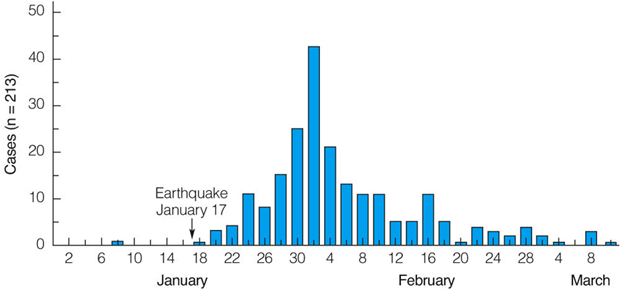 (source: Pipkin, Trent, Hazlett, & Bierman, 2011)
(source: Pipkin, Trent, Hazlett, & Bierman, 2011)
Now, in Japan, we are looking at something which may or may not be the catastrophic meltdown of a reactor in a nuclear power plant. Evelyn Mervine of Georneys conducted an interview this morning with her father, a nuclear engineer, on the situation in Japan. There was a dramatic explosion there this morning, but engineers at the site report that the reactor itself is not in imminent danger of a full meltdown.
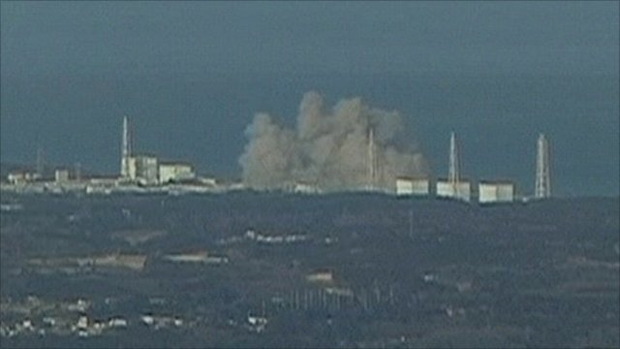 (source: BBC)
(source: BBC)
At the moment, the news suggests that this reactor is going to be cooled down through a last-ditch effort to cool the reactor with seawater doped with boron. Hopefully that will work. If it does, we will all breathe sigh of relief. However, what about a situation where the meltdown is not stopped in time? Not necessarily today in Japan, but in some future earthquake at some other nuclear power plant. (San Onofre comes to mind…) Surely that would go down in the record books as one of the greatest environmental catastrophes in human history.
It would be the ultimate secondary effect.
The morning after
A new resource for the Japanese earthquake is online this morning, a “supersite” similar to the ones that exist for other huge events. Checking it out this morning, I found some interesting stuff. Over night, there have been more aftershocks, and here’s the most recent 600 or so events in the area, taken from IRIS’s interactive map. You can see the big circle that represents yesterday’s main shock:
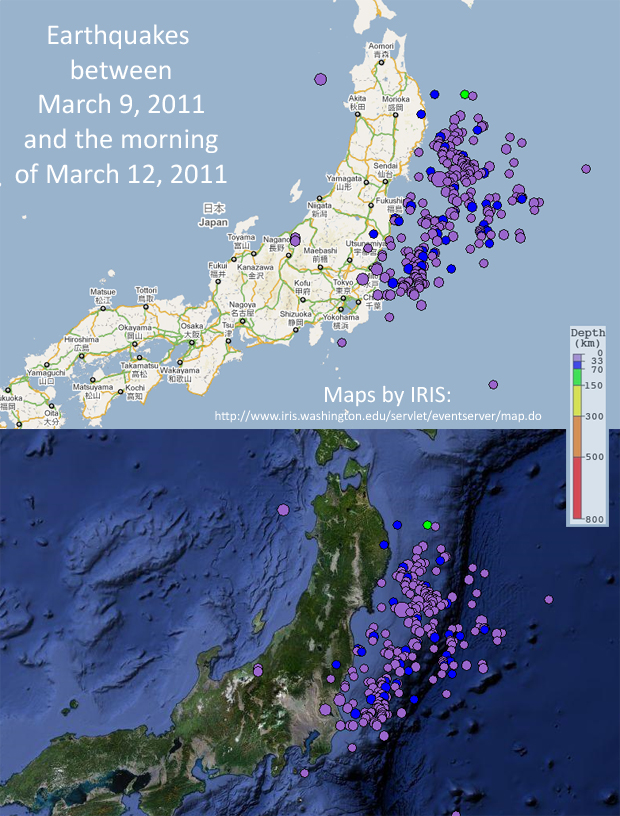
Explore the IRIS Earthquake Browser yourself by clicking here.
Also of note is this GPS vector map — this shows with arrows of different sizes and orientations the motion vectors of different spots on Honshu as a result of the event, its foreshocks, and its aftershocks:

Basically, this is a comparison (as the upper left indicates) between March 8 at 9pm and March 11 at 4:30pm of the positions of a bunch of GPS receivers. They’ve moved, some more than others. It’s from information like this that we hear news reports about how the “coast of Japan has moved 8 feet to the east.” Note the scale bar in the lower right is 50 cm. Though there is some overlap that makes the arrows appear to designate greater magnitudes than they really do (poor information design, I’m afraid), some of the lone, clear arrows clearly indicate displacements of more than 2 meters (4 x 50 cm).
A few other links that may be of interest:
Chris Rowan of Highly Allochthonous discusses the tectonics in a much-anticipated post here.
Steve Schimmrich of Hudson Valley Geologist examines the idea of next week’s “SuperMoon” perigee-syzygy, and dismisses it as having anything to do with the quake. (Neil DeGrasse Tyson made the same point yesterday, but Steve goes into a revealing level of detail. Check it out.)
Meanwhile, in Japan’s city of Fukushima, a nuclear power plant is exhibiting some scary symptoms of melting down, including release of cesium and iodine, and exploding. As Evelyn of Georneys said on Facebook last night, paraphrasing my “flaming tsunami” remarks from yesterday, “The only thing worse than a tsunami on fire is a nuclear power plant + a tsunami on fire.” We all wait to see what will come of this horrific example of a bad situation –really, really bad– going to much, much worse. I’m comforted by reports at posting time that the reactor itself wasn’t harmed in the explosion, though that strains credulity. Hoping for the best there. Stay tuned.
11 March 2011
Art imitates art
Something occurred to me this morning when I saw this:
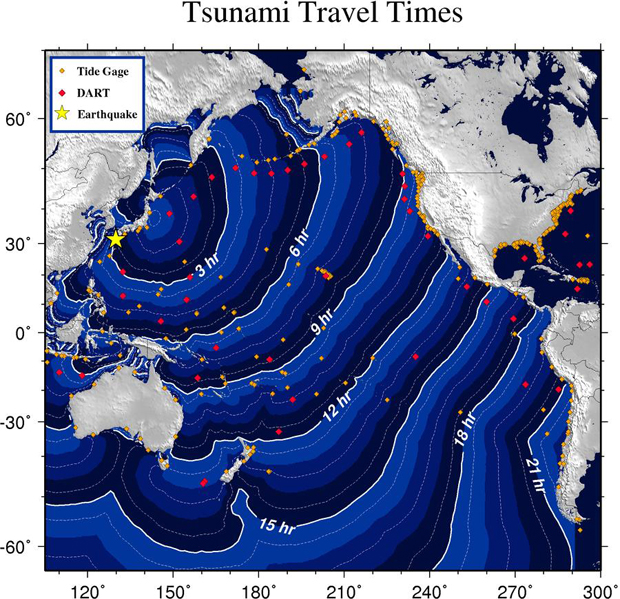 (source)
(source)
…And it was this:
 (source)
(source)
Do you think it’s a coincidence that NOAA’s mapmaker chose that particular royal blue / sky blue / white color scheme, augmented by gray continents with yellow accents? I suspect it’s a beautiful shout-out to the classic piece of tsunami art. The reality is that tsunami are often a horrid brown gray color, full of entrained debris and suspended sediment. The blues in these maps don’t capture the reality of tsunami in nature. Art may imitate art, but it’s not imitating life in this case!
We are seeing some profound destruction today, but while it thoughtlessly slaughters us, the Earth also generates some beautiful patterns… (Links go to a select cut among the many striking images hosted at the Boston Globe’s “Big Picture” site.) What a strange, scary, beautiful planet we live on.
Friday fold(s): Mount Washington 2
More from Mount Washington, New Hampshire: some folds in the Madison Member of the Littleton Formation (schist) along the auto road near Cragway Springs (just past 5 miles up; see map below):

IMAGE SOURCE
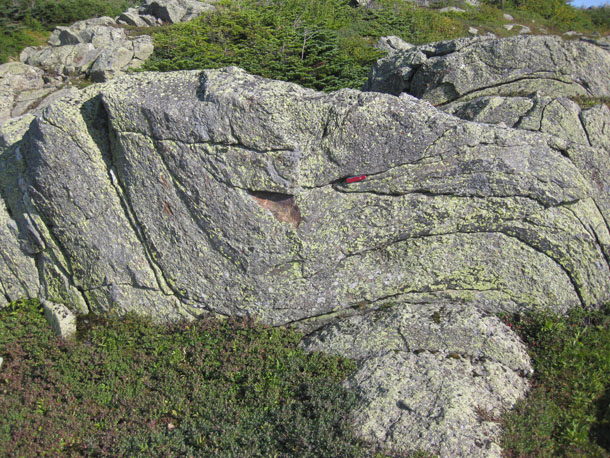
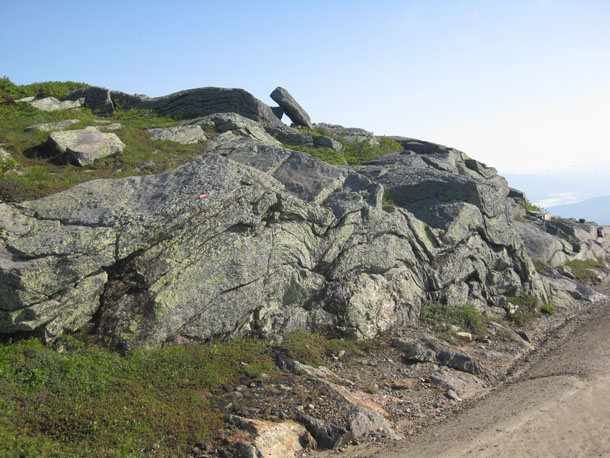


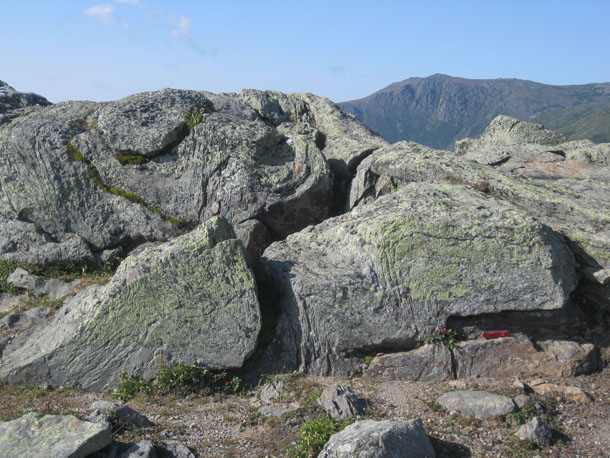
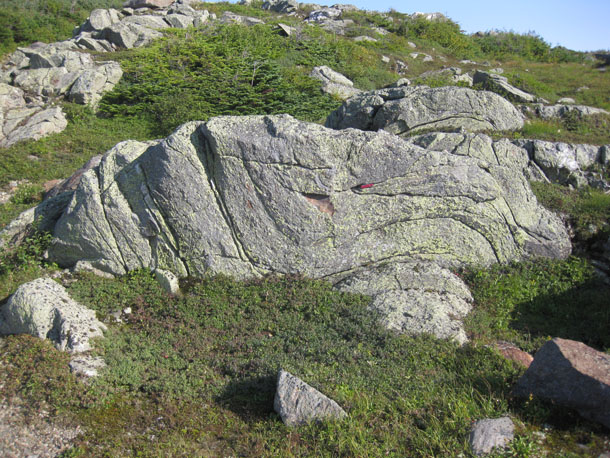

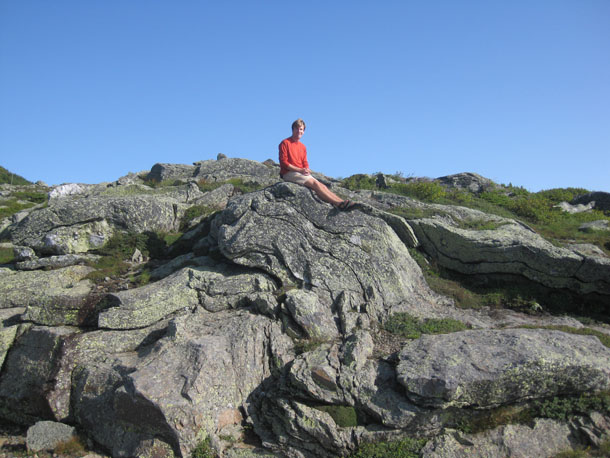
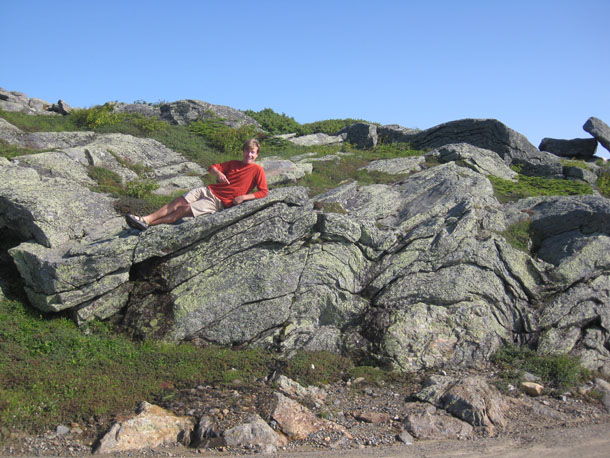
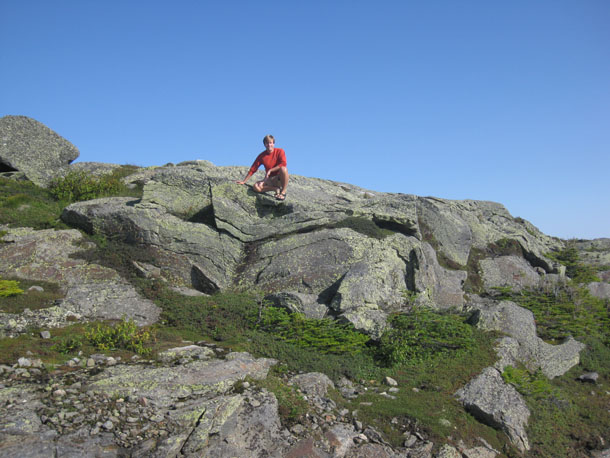
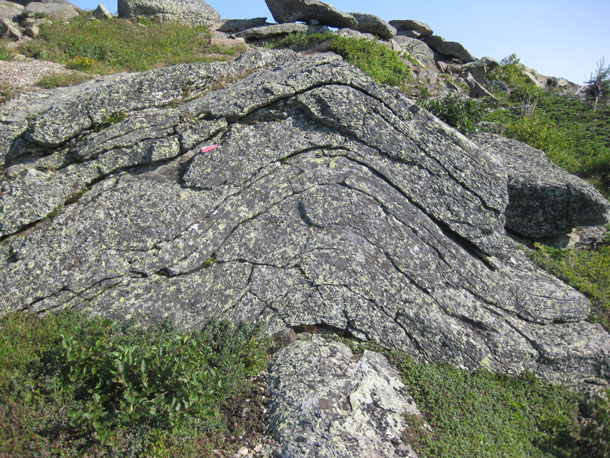
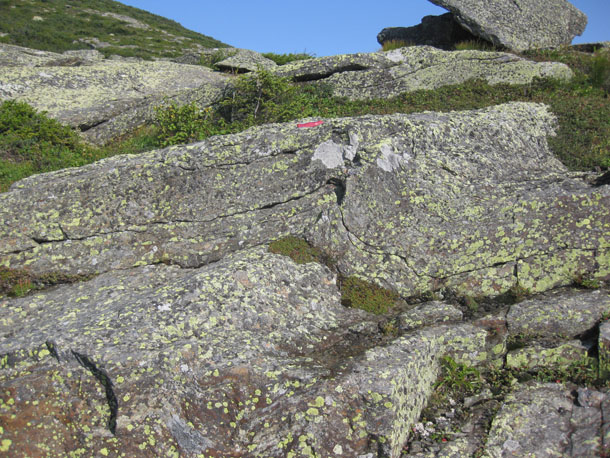
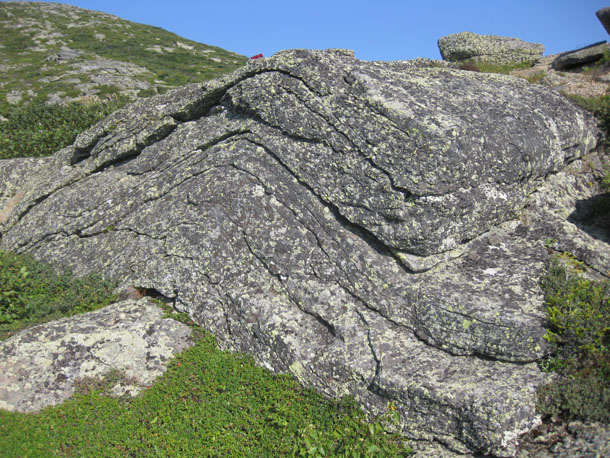
The folds are asymmetrical, with long west-dipping limbs, and shorter east-dipping limbs.
Happy Friday!
Japan M8.9 quake + tsunami
I’m not usually the “report on current events” type of geoblogger, but someone needs to throw a few details up ASAP for those who are interested in the details of the big Japanese earthquake and resulting tsunami that is currently crossing the Pacific Ocean.
First off: links to other geoblogs already reporting on the event: Geotripper, Paleoseismicity, Hypo-theses, Dan’s Wild, Wild Science Journal , Eruptions, Georneys, Hudson Valley Geologist, and the Landslide Blog.
Context – If the 8.9 magnitude is confirmed, this is the fifth largest earthquake ever recorded. It is claimed (by the BBC) to be the largest earthquake to strike Japan in more than 140 years.
The earthquake was located at a depth of 17 km (relatively shallow, hence its capacity to generate a tsunami) just east of Japan’s main island, Honshu. This is a near a complicated tectonic meeting place, where four plates meet (pardon my rough sketch of the boundaries):

However, key to understanding the quake is that deep trench to the east of the epicenter. This marks the spot where the Pacific Plate is “diving” down into the Earth beneath the overriding plate, the North American Plate. This subduction zone is also the cause of northern Japanese volcanism, as dewatering of the subducted slab of oceanic crust triggers melting, and the resulting magma rises to the surface to erupt.
The main earthquake’s focal mechanism (‘beach ball’ diagram taken from here and re-colored) is shown. This isn’t a “classic” reverse fault mechanism, and (given its shallow depth) may indicate a high-angle normal fault in the overriding plate (North American Plate) while the base of the plate stays locked to the underthrusting Pacific Plate at the subduction zone itself. As we saw with the 2009 L’Aquila quake in Italy, normal faulting can happen — to destructive effect — in the complex mess of rocks and faults above a subduction zone. [update] Another possibility, as Chris notes in the comments, is that that shallowly-east-dipping plane bisecting the beach ball is the fault plane — that would make this a low-angle thrust fault. But it’s got to be a shallowly-northwest-dipping fault instead. Apparently the distance of the seismograms that were used to create this beach ball may not be of sufficient resolution to determine the dip direction, given how shallow the dip is — a few degrees tilt change, and it’s dipping the other way! We’ll see as we refine our understanding of the focal mechanism as additional data come in.
[update 2] My original beach ball was mis-colored — the new version (shown above) is correct, and I thank Kim for chiming in via the comments just now as I was typing this. I apologize for the error! Such are the traumas associated with rushing to blog about an emerging issue without sufficient coffee. (Maybe this is why I’m not usually a “current affairs” geoblogger. I’m grateful for the peer review, Kim.) The diagram is now corrected in the new version, and as the data warrant, our interpretation must change.
So, for the record: The focal mechanism is a classic “center segment compression” which suggests reverse faulting, which is what we would expect at a subduction zone most of the time.
The map of historical seismicity in the area shows that today’s quake took place in an area where there have historically been many other shallow (<35 km) foci, but also deeper quakes (between 35 and 70 km depth), and some that are even deeper than that:

The yellow and green dots are the epicenters of past earthquakes with depths that correspond to the subduction zone fault complex, while today’s quake was above those (at a shallower depth). I suppose you could say it’s part of the subduction zone fault “complex” in general, but my point is that it’s not likely the “edge” of the North American Plate per se — though such an “edge” is a somewhat artificially-designated notion anyhow. The shallow depth suggests that this earthquake is a signal of deformation taking place within the North American Plate itself.
The footage of the tsunami is striking to watch — I was surprised to see some structures burst into flame as they were being carried inland on the massive wave. Here’s a screenshot from the best video I have so far seen (BBC), annotated by me:

If there is anything worse than being hit by a tsunami, it’s being hit by a flaming tsunami. You can see that at that point, we were still calling it an 8.4; the quake has since been upgraded, as is typical for really large magnitude events. There’s another astonishing gallery of images (including more flaming tsunami shots) here. [update 3] Also check out the gallery from The Big Picture. Crazy imbricated cars, roads split down the middle, and much more.
Of course, we will all be learning more about this event, and the damage it caused, over the course of the next hours and weeks. In the meantime, the key thing is for people in low-lying areas in the Pacific Basin to move towards higher ground. The forecast shows the potential for some damaging waves:

One final thought: there was a big earthquake in New Zealand recently, and now there is a big earthquake in Japan. People will naturally enough see a correlation in timing, and ask whether the two are related. The apocalyptically-minded will doubtless make claims that these events are harbingers of the end of the world. They are not. As with the last time there were several large and damaging quake clustered closely in time (though not space), this clustering is what we would expect with a random distribution of events of different sizes over time. Sometimes the big ones come close together, and sometimes (like in all the time since the Haiti and Chile quakes until now), they don’t. And it’s not the moon. So don’t freak out. This is what the Earth does. It’s awful when people die as a result of the physical processes our planet goes through, but it doesn’t mean the planet is acting in any way unusually.
More later, if I get time to write.
9 March 2011
A portrait of the feldspar as a young mineral
A few microscope photos for you, showing close-ups of feldspars in igneous dikes in the Crazy Mountains of Montana…
You’ve seen these rocks before, when I posted a few field photos from this area in August 2009. I took these images of feldspar phenocrysts in a hand sample (from a quartz latite dike) with my no-longer-brand-new Nikon microscope camera:

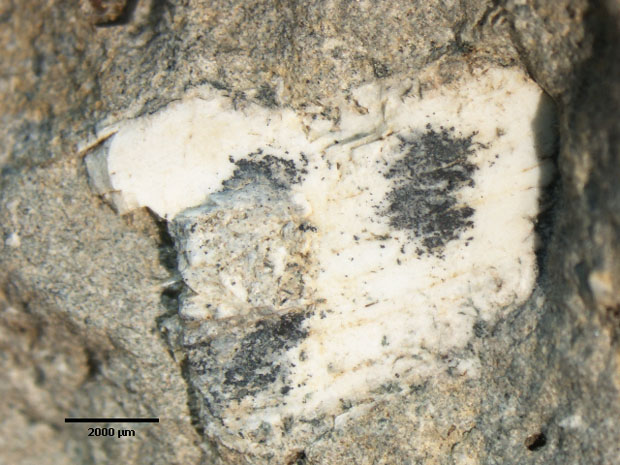

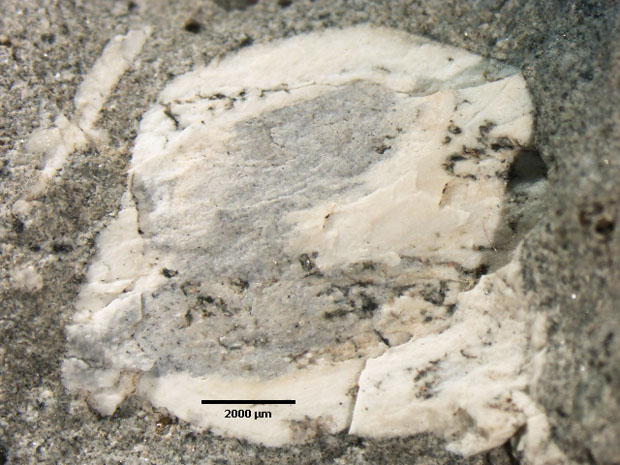

There’s some nice compositional zoning going on in some of these phenocrysts – reflecting the changing composition of the magma in which they nucleated and grew.
8 March 2011
A couple other Montana shots
Friday’s prompt to post the French Thrust shot gave me the opportunity to dig into my “Rockies” folder a bit. Here’s two other shots from my inaugural summer leading my Geology 295 field class out there.
Hiking the trail to Grinnell Glacier:

…It looks like we’re in the Appekunny Formation here, third from the bottom in the stack of Belt Supergroup strata at Glacier. In the distance, you can see the dark stripe of the Purcell Sill, intruding into the limestone of the Helena Formation.
And here’s a pleasant evening at camp, with the students taking a practical exam on identifying and interpreting rock samples that we’ve seen so far on the trip:
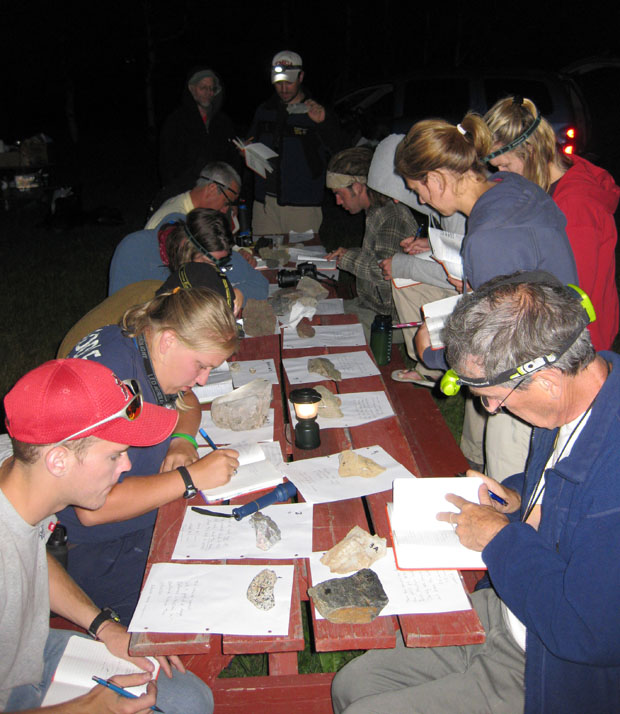
…I love all the headlamps! We had two of these after-dark exams on the class that first summer, and this was definitely the more enjoyable of the two. The other one was amid a menacing cloud of mosquitoes, and that makes it really hard to concentrate on rock identification.
I love this class. The students I’m still in touch with (which is, now that I think about it, most of them) all report that their memory of these field practical exams as something intense at the time, but that they now look back on with fondness.
Want to sign up to join us in the Northern Rockies this summer? We’ll be out there, geologizing away, from June 25 through July 10.
7 March 2011
Books about atheism
I’ve been reading some books lately about atheism. Though I’ve been a functional atheist for many years, I’ve been paying more attention to it lately in light of religiously-inspired idiocy from around the globe. I’ve become convinced that religious belief does more harm than good, and my sense of incredulity has deepened at how far my fellow humans will go in their own self-deception. So I’ve been doing some reading on the topic, and reflecting on that reading. Here’s a quick digest of seven books that I’ve read over the past couple of months. I’ll conclude at the end with a few thoughts on what all this means for me, for you, and for us.
The God Delusion, by Richard Dawkins
I’ve read several of Dawkins’ books on evolution, but this was the first time I’ve delved into his atheism tracts. On the whole, it was much less interesting than his explorations of evolution, but I found a few bits worth remarking on.
One thing I found thought-provoking is Dawkins’ exploration of how “monotheistic” the world’s big religions are. Catholicism was the example that really caught my attention. Nominally monotheistic, it actually functions in a polytheistic fashion. You could start with the “trinity” concept — the “father, son, and holy ghost” bit: Is that three gods or one? Then throw in entities like the Virgin Mary, who people pray to and claim that she can intercede in their lives and work miracles — she is a god in all but name. And then, you can get into any of the gazillion saints they have — capable in some Catholics’ minds as prayer-responders in their own right. What is the functional definition of a god, if not responding to prayers in an active role?
Another bit that I thought was a real treat was a collection of quotes showing the non-Christian nature of the United States, as determined by its “Founding Fathers” (such a sanctimonious phrase):
“Christianity is the most perverted system that ever shown on man.” -Thomas Jefferson
“Lighthouses are more useful than churches.” -Benjamin Franklin
“This would be the best of all possible worlds, if there were no churches in it.” -John Adams
These guys were wise, well-educated, thoughtful intellectuals with a strong secular bent. However, they are rarely invoked as such today. Instead, right-wing American politicians with an interest in mixing church and state often invoke the Founding Fathers in support of their Christian viewpoint, and make claims that the U.S. is a Christian nation. Dawkins quotes the elder George Bush as saying “I don’t know that atheists should be considered citizens, nor should they be considered patriots. This is one nation under God.” (The “under God” bit was added to the U.S. Pledge of Allegiance in 1954, two years before “In God We Trust” was adopted as the official motto of the U.S. Its appearance on U.S. coins goes back to the 1860s, but certainly nowhere as far back as the founding of the republic.)
Dawkins explores and argues against the various arguments for God, and then dashes them apart, one by one. An argument against God’s existence that had never occurred to me was the mutual incompatibility of God being both omniscient and omnipotent. Dawkins shares a little rhyme on the topic that he picked up from Karen Owens:
Can omniscient God, who
Knows the future, find
The omnipotence to
Change His future mind?
I guess this goes back to the old saw about God making a boulder so heavy he couldn’t move it… maybe not all that interesting or new. They even have a name for it: theodicy. But at the very least these lines of thinking suggest that if God exists, our depiction of him must be lacking in some regards. (At the most, they imply that God cannot exist at all.) Dawkins also makes reference to the amusing list of “proofs” of God’s existence listed online here — a mix of the sorts of stuff people actually say and a bunch of spurious hooey thrown in for laughs. One of my favorites is the “argument from incomplete devastation,” which goes like this:
(1) A plane crashed killing 143 passengers and crew.
(2) But one child survived with only third-degree burns.
(3) Therefore, God exists.
One of the most powerful parts of The God Delusion to me was Dawkins’ exploration of the Bible. I’ve not yet read the Bible myself, and so I was astonished at some of the hideous ideas it contains. One theme that has Dawkins turn to the Bible is the notion that without religion, there would be no “moral compass” to keep everyone behaving (as if we are behaving, anyhow). Dawkins dredges the Bible for evidence of it being a horrible saga of horrible things happening to horrible people for horrible reasons.
One of the most shocking to me was the story of Lot from Genesis. This is the saga of Sodom and Gomorrah — you may have heard it, but I’ll bet you didn’t know the details. It goes something like this: Sodom and Gomorrah were wicked cities, where homosexuality was rampant, and so God decided to blow the cities to pieces. But there was one guy in Sodom who didn’t deserve such a treatment, a moral man named Lot, the only one who didn’t engage in “sodom”y. So God sent a couple of angels over to talk to Lot and say, “Man, you’ve got to get out of town this weekend!” But the Sodomites saw the angels and got horny, and surrounded Lot’s house demanding that Lot turn over his celestial guests so that they could screw them. But Lot would never allow such a thing to happen to his celestial guests, so he said, “I know! I’ll throw them my virgin daughters to rape instead!” (This is the moral exemplar of Sodom, remember, a guy who’s so “good” that he alone deserves special intervention.) The angels say, “Oh, shucks, you don’t have to do that. We’ll just blind everyone instead!” And they do, so Lot’s daughters aren’t subjected to gang rape after all. Whew! So Team Lot gets out of town, and sure enough, God rains brimstone and nukes on the town, and Lot’s wife turns around to take a look and gets transmogrified to a column of halite as a way of spiting her curiosity. Lot and his two daughters hole up in a cave in the hills, where the daughters then get Lot drunk on wine, and take turns seducing him. Once the incest has resulted in them getting pregnant, they’re happy, and the story ends. Don’t believe me that this story is a Biblical exemplar of good moral behavior? Check it out for yourself in Genesis 19. It is unbelievable that this is the sort of thing that the majority of our country looks to for moral inspiration.
And that is exactly Dawkins’ point — that nobody really draws their morals from the Bible, at least not exclusively, and therefore the argument that religious faith is the root of all morals is a false claim. Sure, you can point to other passages in the Bible that make more laudable moral examples, but the Bible is internally contradictory on so many other matters, this should perhaps not surprise us. For instance, Genesis offers two accounts of creation, and they differ in when humans show up relative to animals, and the relationship of men to women (Adam’s rib, and all that). The Gospels of Mark and John disagree as to whether Jesus was crucified before or after Passover. If the Bible’s authors couldn’t get even these basic chronologies straight, then perhaps we shouldn’t expect it to tell a coherent moral story either. Take home message: If you can pick and choose which moral lessons to draw from the Bible, you can certainly pick and choose what’s “literal” truth and what’s useful allegory and what’s batshit stupid. We need not eat the chaff with our wheat.
His bottom line: religious ideas deserve no respect, because they are not real.
The End of Faith, by Sam Harris
This is an explosive tract by a philosophical atheist with a neurological bent. Unlike Dawkins, who comes at atheism from his study of biology, Harris took a different path – he rode a stream of rarefied logic straight out of the philosophy classroom. I took two philosophy classes in college, and wish I had taken more; Harris’ writing brought back some of the quixotic flavor of my professors’ arguments, and but seasoned with a passion which is unparalleled in my experience.
His basic idea: religion is undermining civilization’s chance of survival. When you combine dogmatic fervor with weapons of mass destruction, you end up with a situation where even a single devout individual can use the instruments of modern weaponry to cause the deaths of millions of people. As he says on page 13,
Our technical advances in the art of war have finally rendered our religious differences –and hence our religious beliefs– antithetical to our survival. We can no longer ignore the fact that billions of our neighbors believe in the metaphysics of martyrdom, or in the literal truth of the book of Revelation, or any of the other fantastical notions that have lurked in the minds of the faithful for millennia — because our neighbors are now armed with chemical, biological, and nuclear weapons. There is no doubt that these developments mark the terminal phase in our credulity. Words like “God” and “Allah” must go the way of “Apollo” and “Baal,” or they will unmake our world.
The first several pages of the book were so chock full of golden nuggets that I thought I would never make it through the whole book. In fact, I’d say that everyone on the planet should read Chapter 1 of this book and see if they can find fault with Harris’ stance. Faith itself is the problem, he asserts: “Our situation is this: most people in the world believe that the Creator of the universe has written a book. We have the misfortune of having many such books on hand, each making an exclusive claim as to its infallibility.” He notes that “nearly 230 million Americans believe that a book showing neither unity of style nor internal consistency was authored by an omniscient, omnipotent, and omnipresent diety.” (He also wryly notes on page 35 that it’s a curious fact that omnipotent God made Shakespeare a better writer than himself!) Ditto for Jews’ and Muslims’ faith in their own particular scriptural validity. Of course, all “these rival belief systems are equally uncontaminated by evidence.”
Faith in these documents, their literal truth and authority, is not the exclusive domain of those who would commit violence in their name. As such, Harris attacks “moderate” religious people for perpetuating the myths which will lead some small number of their adherents into committing violent acts. According to Harris, faithful moderates are aiding and abetting humanity’s executioners. Further, society’s toleration of religious ideas is itself an accessory to the murders committed in God’s name. Accordingly, he says that faith itself is the problem we must fix. I’m not sure that I buy this argument — it’s like saying because society tolerates scientific advances, then scientists like me would be at fault if there were an evil mad scientist who committed murder based on logic and rational thinking. As individuals operating in a larger societal context, we may inadvertently abet immoral people, but that doesn’t make us directly responsible for their actions.
Still, reading the first 10 pages of this book felt to me like taking a hot, soapy shower after a week of trekking through the rankest jungle, covered in sweat and leaf litter, and sleeping on the forest floor with centipedes and mold. It felt clean, and basic, and re-setting. You and I are surrounded every day by people who think the most insane stuff, and it’s nice to see someone with the guts to take it on and attempt to scour it away.
One of the fine things about this book is the numerous “thought experiments” that Harris performs. (This was one of the things that reminded me most of my undergraduate philosophy classes, which used a similar set of devices.) One pithy example is used to illustrate how religious traditions are essentially just repeating the mantras of the ancients with no hope of progress. He asks us to imagine resurrecting a 14th century Christian. This individual would be hopelessly ignorant of germ theory, atomic theory, plate tectonics, democratic governance, economics, and just about every other field of human inquiry with one notable exception: He would be as expert in theology as any modern Christian. His expertise in religious matters would demonstrate to us how little the basic tenets of Christianity have evolved over time. Harris argues that this is the problem — 14th century morals applied to 21st century reality is the cause of most of our conflicts: conflicts that will be solved with 21st century weapons.
Chapter 2, on epistemology (the study of belief and knowledge) failed to light my fire as much as chapter 1 did. Chapter 3 includes a long (multi-page) list of quotes from the Koran, accumulated en masse to show the inherently violent nature of that book. Here’s an example, an instruction for what to do with non-believers: “Slay them wherever you find them.” …Ummm, any questions? While this list makes for tedious reading, it is stunning in its sheer length and vitriol. It also makes short work of moderate Muslims’ claim that “Islam is a religion of peace.” And it’s not just terrorists that read this literally — on page 126, Harris presents the chilling statistics from a survey of Muslims in 12 countries around the world as to whether suicide bombings of civilians are ethically permitted, and in half of them, more than half of the population says “yes.” That’s moderate?
I liked The End of Faith better than Dawkins’ The God Delusion. Harris has written a terser book with fewer tangents, that cuts to the heart of the matter in a very reasonable and straightforward way. I would also emphasize the pragmatism of Harris’ view — the fact that religious faith is a factor that actively undermines the survival of our civilization as surely as would soil erosion, climate change, epidemics of disease, or meteorite impacts. With regards to Islamic jihad, Harris explores an ethical situation in the final paragraph of chapter 3 in which we may soon find ourselves, with a hypothetical Islamist regime somewhere in the world, armed with a long-range nuclear weapon and (since for them, death is not the end of the story, but the gateway to paradise) a “dewy-eyed” desire for Armageddon. Imagine the chilling situation:
If history is any guide, we will not be sure about where the offending warheads are or what their state of readiness is, and so we will be unable to rely on targeted, conventional weapons to destroy them. In such a situation, the only thing likely to ensure our survival may be a nuclear first strike of our own. Needless to say, this would be an unthinkable crime — as it would kill tens of millions of innocent civilians in a day — but it may be the only course of action available to us, given what Islamists believe. How would such an unconscionable act of self-defense be perceived by the rest of the Muslim world? It would likely be seen as the first incursion of a genocidal crusade. The horrible irony here is that seeing could make it so: this very perception could plunge us into a state of hot war with any Muslim state that had the capacity to pose a nuclear threat of its own. All of this is perfectly insane of course: I have just described a plausible scenario in which much of the world’s population could be annihilated on account of religious ideas that belong on the same shelf with Batman, the philosopher’s stone, and unicorns.
The core belief of Islam is the problem here, Harris argues — if immolating non-believers is seen as permissible or desirable, then we have a serious problem on our hands. Likewise, the fundamentalist Christian notion of the “end of days,” the second coming of Christ, and the abandonment of the Earth, readily fits into this notion of wholesale obliteration of the physical world. Harris concludes this discussion by saying that with apocalyptic prognostications as central tenets of their faiths, Christianity and Islam are two cogs in the engine of humanity’s destruction.
In contrast to the fundamental beliefs of Christians or Muslims, Harris plays on page 148 with the idea of a rise in Jain fundamentalism. In case you’re not familiar with Jainism, it’s a pacifist religion. Harris says, “a rise in Jainism would endanger no one. In face, the uncontrollable spread of Jainism throughout the world would improve our situation immensely. We would lose more of our crops to pests, perhaps (observant Jains will not kill anything, including insects), but we would not find ourselves surrounded by suicidal terrorists or by a civilization that widely condones their actions.” He’s not promoting Jainism in this hypothetical way because he believes in its premises (he doesn’t), but he’s noting that different religions have different core ideas, and some of them are harmless and others are terrifying.
Similarly, Harris isn’t out to write some liberal screed, which is doubtless how some conservative readers will perceive it (judging the book without reading it). He draws a clear line between religious and political conservatism. Some of his harshest criticism is reserved for Noam Chomsky and Nicholas Kristof, in their mushy arguments that, respectively, 9-11 was the United States’ fault, or that religion should be inherently respected in spite of the numerous ills that it breeds.
In Chapter 4, he deals with the pernicious notion of “sin,” and lays a withering stream of criticism down on U.S. drug policy. Pages 161-164 are a distilled argument that the United States citizenry must be out of our minds to allow alcohol’s ravages (historically sanctioned) but puritanically and maniacally punish the use of other recreational drugs like marijuana. We send people to prison for life with no chance of parole because they have bought or sold a substance which produces a feeling of euphoria. Harris digs into why religions find this anathema, and it’s stupid beyond belief. I’d quote the whole thing here just because it’s so relentlessly logical, but I feel I’ve gone on long enough already about this book. So let’s move on to…
Letter to a Christian Nation, by Sam Harris
After the publication of The End of Faith, Harris got a few letters. Actually, more than a few. This letters came from people of faith, and they wrote to tell Harris why he got it wrong. They raised several arguments in support of their point of view, and Harris drafted Letter to a Christian Nation as his response. This slim volume can be read in a couple of hours, and it covers some of the same territory as The End of Faith and makes a couple of new points too.
He first takes on some of the myths of modern American Christianity, as raised in the letters he received. One of these is that Christianity is peaceful, or — phrased slightly differently — that Christianity is the sole source of peace. This strikes me as an “in the eye of the beholder” type of argument — while I have friends, family, and colleagues who find a personal sense of peace and guidance in Christian teachings, there are plenty of disagreeable (and non-peaceful) counter-examples too. A few violent quotes from the Old Testament invalidate this claim, and Harris makes a special point to show that Jesus embraced the teachings of the Old Testament. Though Jesus is usually quoted for his clearly moral teachings (e.g., the “Golden Rule”), nowhere in the New Testament does he explicitly disavow violent teachings of the Old Testament. In many places, he explicitly endorses them. It is my understanding that while the Old Testament is sometimes published solo, the published New Testament always comes paired with the Old. Because Jesus makes frequent reference to Noah, Lot, and their peers, the two are most typically published together — you can’t have the New without the Old. Correct me if I’m mistaken about this.
This is interesting, because there is some seriously wacky stuff in the Old Testament. To give an example other than those already cited above, consider what the Bible has to say about slavery: it’s fine. The Bible spells that out quite clearly: it is okay to own other people. Furthermore, you’re allowed to sell your own daughter into slavery. No worries, as far as a literal reading of the Bible is concerned, and that goes for both the Old and the New Testament. Of course, no modern person thinks that slavery is moral. These disturbing passages make sense if we view the Bible as an historical document which bears the worldview of its time, but selling one’s children into slavery as a moral act endorsed by an omniscient (and presumably prescient) author seems quite a bizarre stretch. Ergo, Harris concludes, “anyone who believes that the Bible offers the best guidance we have on questions of morality has some very strange ideas about either guidance or morality.”
In his discussion of morality, Harris again invokes Jainism in the interest of comparison. Harris defines morality as preventing suffering. When you take a look at the Ten Commandments, only five focus on morality. The first four are religious instructions about respecting God, and the final one is about a state of mind (covetousness). In contrast, Mahavira (the Jain patriarch) said, “Do not injure, abuse, oppress, enslave, insult, torment, torture, or kill and creature or living being.” Harris asks:
Imagine how different our world might be if the Bible contained this as its central precept. Christians have abused, oppressed, enslaved, insulted, tormented, tortured, and killed people in the name of God for centuries, on the basis of a theologically defensible reading of the Bible. It is impossible to behave this way by adhering to the principles of Jainism. How, then, can you argue that the Bible provides the clearest statement of morality the world has ever seen?”
He then hammers the point home with a suite of medical issues which have on one side the prevention of suffering (i.e. morality) and on the other side, the Christian prohibition against them for reasons of not wanting to promote sin. The distribution of condoms in Africa, for instance, prevents the spread of HIV and thereby reduces suffering. Yet it is proscribed by most Christians. There is an effective vaccine against human papillomavirus (HPV), a virus which increases the risk of cervical cancer among the women who contract it. But conservative Christian groups do not want the vaccine to be promoted, because contracting HPV is a powerful dis-incentive against engaging in sex. They are willing to sacrifice thousands of womens’ lives every year because they are not interested in preventing suffering, but are instead focused on what people do when they are naked. This is immorality that fundamentalist Christians call “morality.” A final example is the Christian prohibition on stem cell research – placing a higher value on a ball of 150 cells than on a baby with a congenital birth defect is profoundly immoral in Harris’ view.
He also finds himself having to counter his letter writers’ claim that “atheists are immoral.” He notes that 97% of the National Academy of Sciences don’t believe in God, then asks whether his Christian correspondents think that these scientists are more likely than their neighbors to rob, rape, or otherwise act in immoral ways. Then he shares some correlative statistics about how the most religious areas in the United States actually have the highest crime statistics. Correlation isn’t causation, but it certainly disabuses one of the notion that atheism and morality are incompatible.
One thing, a small but worthy tidbit, that I picked up from reading Letter to a Christian Nation, is that the word “atheist” itself should not have to exist. As Harris points out, no one has to call themselves a “non-astrologer” or a “non-alchemist.” There are countless unsupported silly notions out there that don’t deserve a name to describe everyone who thinks in a contradictory (i.e., rational) way. Full disclosure: I write this review as a strict non-unicornist, non-Leprechaunist, aTinkerbellist, non-Ouijaian, and a non-chakra-ist. If I am godless, I am also goblinless, fairy-godmotherless, Voldemortless, Voodooless, ghostless, and Bigfootless. I am an aLochNessMonsterist.
Finally, Harris briefly deals with creationism and the current vogue of “Intelligent Design” – not worth going into it here, but again he raises a cutting thought experiment. He asks his Christian correspondents to imagine that a central tenet of their faith had the Sun being something distinct on its own, something unique, and not just merely a star that happens to be close to us. Imagine, he continues, the expenditure of money, propaganda, and political will to get the school system to teach the controversy of what the Sun actually is, and to counter the observations and interpretations of the godless astronomers and astrophysicists. This is of course an analogy to shed light on how ludicrous it is that a well-corroborated, successful central tenet of modern biology is under attack from Biblical literalists. It’s only wrong in Christian minds because if they were to accept evolution, it would demonstrate the falsity of the Bible. And if that book isn’t true, then what does that imply about their belief system…? You can understand their steadfast adherence to Biblical literalism, for they can see as plain as Harris can where it would lead to allow evidence were to have priority over faith.
This, to me, is striking. It’s the elephant in the room in any discussion of the relationship between science and religion. Many large organizations which promote science, like the AAAS, the National Academies, and the National Center for Science Education, all take an approach which says essentially, ‘science and religion address different things, and are mutually compatible.’ Like the authors I’ve been reading this past month, I disagree. The “non-overlapping magisteria” argument of Stephen Gould is a cop-out. It is offered as the official position of these august institutions, I assume, to avoid triggering offense on the part of the large number of religious U.S. citizens: the ones whose taxes or political tolerance they rely on. Sorry, Christians, Harris says: these two are indeed incompatible. He doesn’t work for AAAS or the Academies, and so he doesn’t have to be politically correct. I’d venture that Harris is saying what the AAAS is thinking but cannot bring themselves to voice.
Science didn’t set out to kill God; it just happened as a side-effect. Science, whether it’s biology examining the nature of species, or geology examining the nature of time, reveals that the Bible has got it factually wrong. No offense, but the Bible cannot be true in its statements about past events such as the formation of our universe and our species. Facts win. Statements which are inconsistent with facts? They lose. Christians have to get over embracing literalism: the Bible is just an ordinary book. You may be inspired by parts of it, but it does not describe the reality of nature.
God is Not Great, by Christopher Hitchens
This, along with The End of Faith and The God Delusion, was billed as part of the trinity of books which defined a movement billed as “The New Atheism” (lately billed as “Gnu Atheism” for fun). It’s more literary and political than the other two, citing Evelyn Waugh and George Orwell more frequently than the Koran or the Bible. While Dawkins comes at atheism from biology, and Harris via philosophy and logic, Hitchens’ path has been via his far-roaming experience with the modern world, its literature and citizens, its rituals and wars. He has said (though not in this book) that “The real axis of evil is Christianity, Judaism, and Islam.” Because of his literary background and his in-depth knowledge of history and culture (which I lack), I found his writing harder to follow than Dawkins or Harris.
He’s an odd duck, but writes with a cultivated fury that is a marvel to behold. When I’m not being thrown off by an allusion to some British writer I should have read but haven’t, or some sect of Islam that I’ve read about in the papers but not retained, I gasp at the way he writes. One of the reviewers quoted on the back cover calls him “America’s foremost rhetorical pugilist,” a title that strikes me as quite apt. I frequently found myself raising my eyebrows in wonder as Hitchens put forward a series of well-crafted sentences that land like pummeling blows on the objects of his discontent. As an example, consider this bit where he considers the idiocy of ‘intelligent design’:
The stamp of the lowly origin [of man] is to be found in our appendix, in the now needless coat of hair that we still grow (and then shed) after five months in the womb, in our easily worn-out knees, our vestigial tails, and the many caprices of our urinogenital arrangements. Why do people keep saying “God is in the details”? He isn’t in ours, unless his creationist yokel fans wish to take credit for his clumsiness, failure, and incompetence.
Boom. I love the way he wields vocabulary both highfalutin and slang in his hard-charging argument — the scalpel and the cudgel! The man is an intellectual who is also an aesthete and a war reporter from the front lines. He doesn’t shy from the world’s violence, but he condemns it if religiously inspired (and hence pointless). Violence which has a nobel object is embraced by him, on the other hand — he caught a lot of fame for supporting the U.S. invasion of Iraq, for instance. If there were such thing as a literary barroom, he would be brawling in it.
God did not create man in his own image. Evidently, it was the other way about, which is the painless explanation for the profusion of gods and religions, and the fratricide both between and among faiths, that we see all about us and that has so retarded the development of civilization.
Another time, after showing that certain Islamic rituals are lifted from Catholicism, he concludes:
It is demonstrated that monotheistic religion is a plagiarism of a plagiarism of a hearsay of a hearsay, of an illusion of an illusion, extending all the way back to a fabrication of a few nonevents.
Hitchens is famed as an independent thinker, whose politics and rhetoric don’t ever fully represent any ideological movement. He doesn’t even describe himself as an “atheist” so much as an “antitheist.” He is his own man. He’s a tough one to pin down, as certainly liberals and conservatives can find criticism of their enemies in Hitchens’ writing, but to embrace it they must ignore his criticism of them. Reading the book, this is apparent, and engenders in me, the reader, a sense of trust that he’s not a representative of any movement, just a free thinker who excels at eviscerating hypocrisy wherever he sees it. His zingers kept my interest when reading the book, but it’s a guilty pleasure, as it’s hardly a fair fight. The weakness of supernatural thinking is no match for the wit, erudition, and bared teeth of Christopher Hitchens.
His Dark Materials, a trilogy by Philip Pullman
This fictional trio of books is cut from a different cloth than the other books in this post. In consists of The Golden Compass, The Subtle Knife, and The Amber Spyglass. Overall, it’s something like Narnia meets Harry Potter, but darker and with atheistic undertones. It’s not an atheist tract per se; in fact the deepest part of the plot has inspiration in a new interpretation of a Biblical tale. But while belief isn’t the main issue that gets the author’s goat, there is a clear contempt for religious authority. One of the characters sets out to kill God, for instance. Another is a priest and an assassin; some angels are gay; parents can be both sadistic and heroic. As in Oz, there are good witches and bad witches.
Without revealing too much of the plot, I think it would be fair to offer the following quotes as indicative of the flavor of the books as relevant to this discussion of atheist literature:
“That is what the Church does, and every church is the same: control, destroy, obliterate every good feeling. So if a war comes, and the Church is on one side of it, we must be on the other…” (p. 45 of The Subtle Knife)
“We’ve had nothing but lies and propaganda and cruelty and deceit for all the thousands of years of human history… Every advance in human life, every scrap of knowledge and wisdom and decency we have has been torn by one side from the teeth of the other. Every little increase in human freedom has been fought over ferociously between those who want us to know more and be wiser and stronger, and those who want us to obey and be humble and submit.” (p. 282-283 of The Subtle Knife)
“I used to be a nun, you see. I thought physics could be done to the glory of God, till I saw there wasn’t any God at all and that physics was more interesting anyway. The Christian religion is a very powerful and convincing mistake, that’s all.” (p. 441 of The Amber Spyglass)
I also watched the Hollywood movie version of The Golden Compass, and let me tell you: it stunk. It utterly failed to capture the magic of the alternate universe where it is set, and offered a totally confusing plot with a minimum of character development and deeper rumination. Skip it.
What does this all mean for me?
Not all that much. I was an atheist before I read these books, and I remain one after reading them.
I am concerned that by putting up this blog post I may engender some enemies on the internet, or among my friends and family. I live in America, and work in a state that could be justifiably classed as a part of the “Bible Belt.” A lot of my colleagues and students are Christians and Muslims, and they may be offended to read me state so explicitly about why I think that their beliefs are both wrong and a detriment to humanity. This is sad, and it causes me some regret to risk riling things up. I deliberated whether to post this discussion at all because of this potential consequence. But most of my friends and family and colleagues are also reasonable, non-fundamentalist individuals, and this gives me solace. I think they can handle the unavoidable tension as I hereby acknowledge the elephant in the room. I think they will understand my compulsion to discuss the “elephant,” and I suspect most of them will be sympathetic to being asked to join in the conversation.
Another concern is that I may be restricted from traveling in certain areas of the world that host intolerant religiously-derived cultures. Though it’s only a book report, this blog post may be seen as blasphemy by some — and that may lead to negative consequences for me as its author. Other people’s religious faith is a scary, threatening thing. But that’s all the more reason that I feel compelled to put this discussion out there, to promote the discussion that I hope eventually leads our collective society to a place of sustainability and contentment.
What this means for you:
If you are a fellow non-theist, atheist, or anti-theist, then you can now rest assured that I share your outlook with regard to philosophical naturalism. (See my review of For The Rock Record in the May 2010 issue of Earth magazine for a discussion of this school of thought.) I don’t know where you stand on ghosts and UFOs and demons and dowsing, but presumably if you discount the supernatural in the case of gods, then you discount these other supernatural notions, too. You and I probably share a respect for the scientific method as the way forward for our species. You may be an ethical person, and seek an expansion of understanding that ultimately leads to the betterment of humanity and our fellow species. Like me, you’re probably not certain how exactly to get there, but you’re curious and thoughtful. If you’re an atheist who is non-ethical (the caricature of the “atheists lack morals” argument), then I don’t know what to say. I’ve never met anyone like you, and I suspect you don’t actually exist.
If you are a Jain, an animist, or a some kind of Druid, then it seems to me you’re “mostly harmless.” I don’t see you as an immediate threat either because of the non-violent nature of your belief system, or because you are far away and unlikely to come visit my neck of the woods (though I worry about offending you when I travel to your land and act insufficiently multi-cultural), or simply that there are so few of you around that the odds are low that you will ever be directly threatening to me. Though I disagree with you, I’m not likely to focus much on it, since I see your belief system as irrelevant.
If you are a believer in the Biblical God or Allah, then I am more concerned. You are instructed by your holy scriptures to kill everyone who doesn’t agree with you. The Bible and the Koran are quite clear on this point. If you take your chosen sacred book literally, you are “morally” bound to execute me and every other non-believer out there. This stinks, because I don’t want you to kill me, and I don’t want you to harm anyone else. But I don’t see any way around this conclusion. If you disagree with this interpretation, I would suggest two possibilities, one grim and one commendable. Either (a) you are not familiar with your holy scriptures in detail or (b) you are thinking for yourself, and accepting only the parts of these documents that make sense to you in the modern world, with an independent set of morals. If the former, I encourage you to re-familiarize yourself with the inherently violent ideals of your faith, and to reject them in disgust. If the latter, I think you’re doing the only reasonable thing a person of faith can do — retain your ancestral / cultural belief system but do your own moral reasoning. That is superb. Hopefully your thinking will lead you away from religious traditions of ignorance, rote commandments, and violence. As an exemplar of thoughtful consideration and independent thinking, hopefully you will inspire others in the same direction.
It is entirely appropriate for you to reflect on the various sources of information available to you: your direct observations of nature, your reading of “holy” books, your reading of secular books, your conversations with other people, and to take inspiration and guidance where it seems right to do so. I’m not seeking to deny you that; that’s what I do too. My position is that that the larger paradigm that your belief supports — a society dominated by supernatural thinking with a strong subcurrent of apocalyptic thinking — is a dangerous one. Your individual, well-thought-out reasons for supporting such a society may be entirely valid, but the result is a scary thing indeed. I don’t feel it’s wise to indulge in supernatural thinking any more. As with the tooth fairy or Santa Claus, it’s time for humanity to grow up and embrace reality — for the sake of our own survival.
What this means for us:
I like you, and I look forward to our future conversations here on the open forum of the internet. You may retain beliefs that I find nonsensical or illogical, but I can deal with that. Hopefully the same is true in reverse? I’m not trying to pick a fight; my goal is merely to record my perception of reality. Our conversation here on this geology blog is about the Earth, about material stuff and about process, and our language will be scientific and rational. We will be methodological naturalists here, and supernatural explanations will be rejected because they have no place in a discipline that asks explanations to be empirical, logical, and testable. Furthermore, I’m going to call you on it if I see your faith as dangerous (either directly or indirectly). That being said, I want to know what you think, and why you think it. So speak up. I’ll try and keep my comments courteous, and of course so will you. After all, I respect you, and trust in your ability to make up your own mind and stand up for your conclusions. If there’s something in this post that you disagree with, I trust that you will take a moment to point it out to me. Heck, if we’re even talking to one another, it implies that you’re embracing your faith in a way that allows a modicum of open-mindedness to discussion, to reason and mutual respect. This pleases me. I think that’s right where we ought to be.
6 March 2011
French Thrust
That title sounds kinky, right? Well, calm down.
I’m behind the curve on the latest Accretionary Wedge (as I was for the one before that), but here’s a quick image to join the parade of geologic photos that Ann is hosting. While it’s not my favorite, it’s definitely a favorite, more by virtue of the geology it shows than the aesthetic qualities of the image:
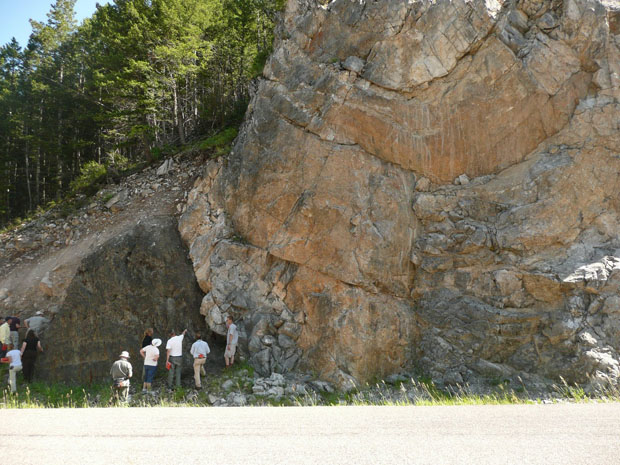
That is an outcrop of the French Thrust, one of many imbricate thrust faults exposed in Sun River Canyon, Montana, just west of Augusta. The light colored rock at right is limestone and dolostone of Mississippian age, and the dark rock at the lower left is shale of Cretaceous age (deposited in the Western Interior Seaway). Beyond that, to the very far left, you can see some lighter-colored, poorly-sorted material. That’s Pleistocene glacial till, and both the shale and the till are capped by a sloping layer of colluvium, tumbling down from higher elevations. The contact between the shale and the dolostone is a thrust fault. Half a mile downstream there is another. Half a mile upstream there is another. There are a lot of them exposed in Sun River Canyon, and the Canyon cuts across strike of all of them. Note the syncline in the Mississippian carbonates, and the differential weathering of the carbonate (tough, proud) as compared to the shale (weak, depressed). Here’s an annotated version of the photo:
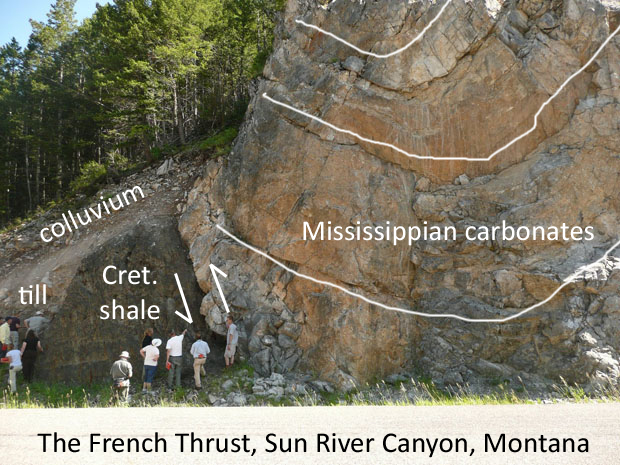
The Sun River Canyon is an unparalleled location in my experience for gorgeous scenery, great weather, a minimum of people, a healthy population of great gray owls, and exceptional exposures of an imbricate stack of thrust sheets. Check out this old post I put up at Pathological Geomorphology for more details about the area.
5 March 2011
Buzzard Rock
Took a hike this morning with my bride-to-be, out to Buzzard Rock on the northeastern corner of Massanutten Mountain.
There, we observed numerous boulders of Massanutten Sandstone float, many bearing charismatic cross-beds.
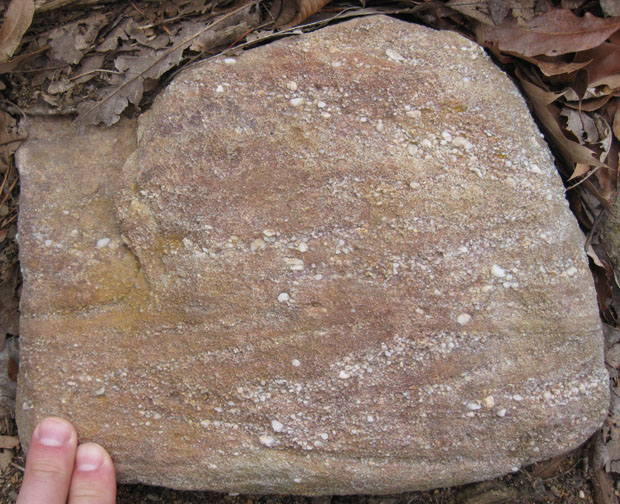


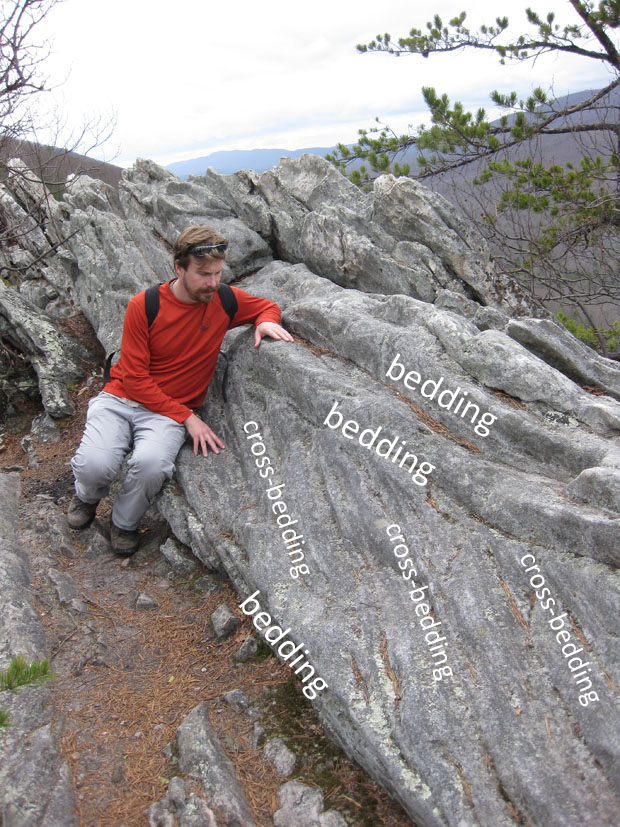
Here’s one more slab of float, presumably weathered out along the main bed, showing gorgeous internal cross-stratification:
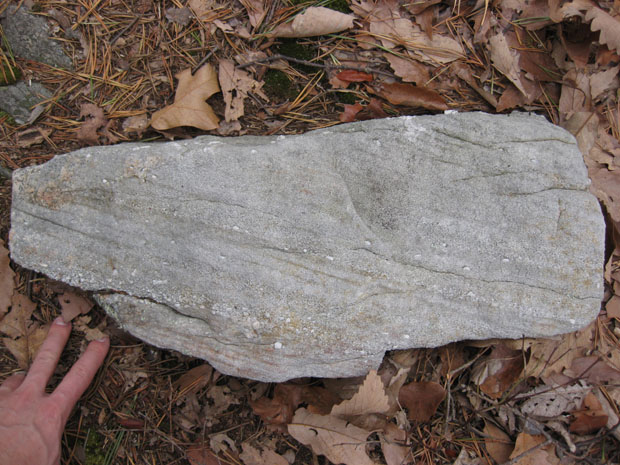
A closer look at the left side of this sample, animated via GIF:

Why animated? Because I can.
The object of the hike was Buzzard Rock, an cliffy outcrop of the sandstone/conglomerate/quartzite. It’s Silurian in age, deposited after the Taconian Orogeny ebbed, and the east coast returned to “passive margin” status. Beach sand built up, and as the waves processed it, they stripped away the clay and rotted the feldspars, and that left nothing behind but quartz pebbles and quartz sand and a few critters which carved tunnels in the sediment prior to it being lithified. A long time later, Africa rammed into Virginia, initiating a phase of intense mountain-building called the Alleghanian Orogeny. It was then that these quartz sandstone layers were buckled into a nice trough-like fold. The edges of this trough tilted more and more, rising up relative to the bottom of the trough. Overall, it’s called the Massanutten Synclinorium today, and we were clamboring about on its eastern limb, made of westward-dipping beds from the Silurian beach.
The quartzite is tough, and stands up well to weathering, producing the ridges of Massanutten Mountain. The layers above and below it are weaker stuff, and are etched away into relatively low relief. This produces the valley-in-a-mountain-in-a-valley effect of the Fort Valley inside Massanutten Mountain inside the Shenandoah Valley. Here’s the view to the north from Buzzard Rock:

Rotate your field of view 90 degrees to your left, and this is what you see — the view to the west, across the north end of the Fort Valley, with Passage Creek and the Fort Valley Road in the “foreground,” and a thousand feet below:
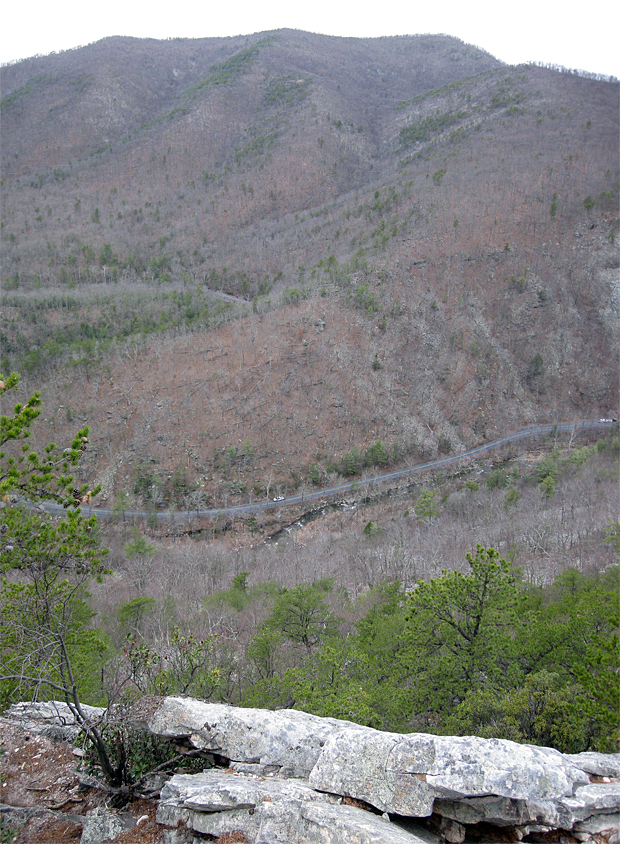
Slightly bigger version here — You can make out the cars a bit better there. The actual big version I have is too big for Flickr and too small for Gigapan, so this is the best you get. Sorry.
Rotating further to left, you’re looking south along the ridge line, and along strike of the beds of Massanutten Sandstone, which dip steeply to the west:
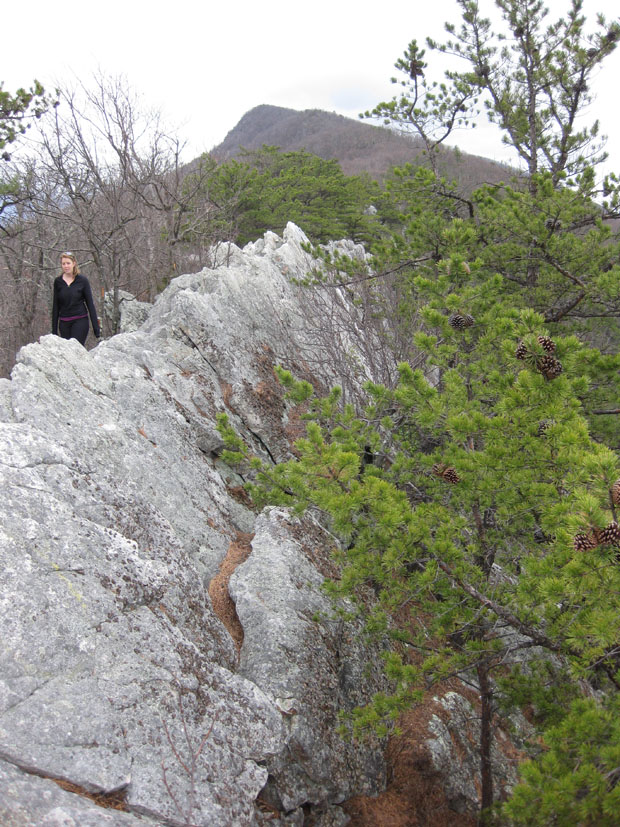
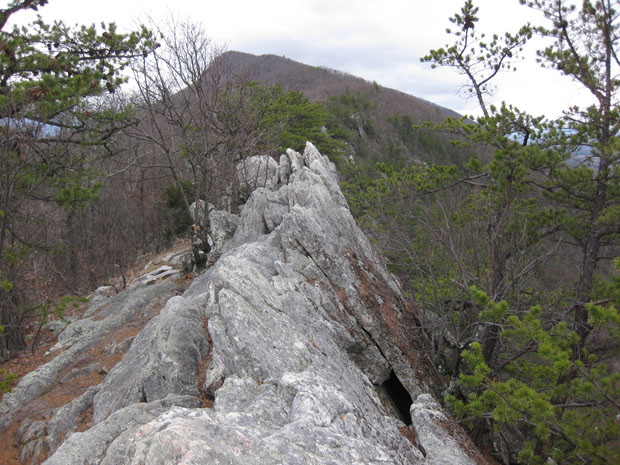
Hopefully that makes you feel like an ant looking down the length of the gunwale of a canoe.
Overall: Great hike for the east coast — It had good elevation gain, nice views from the top, enough interesting geo-tidbits to hold my attention, and it gave us an appetite sufficient to warrant a stop at Foster’s Grille in Warrenton on the return home. Man, they make a great cheese steak and great fries and serve cold Red Hook ESB. As I told Lily over our food, “Life is good.”



 Callan Bentley is Associate Professor of Geology at Piedmont Virginia Community College in Charlottesville, Virginia. He is a Fellow of the Geological Society of America. For his work on this blog, the National Association of Geoscience Teachers recognized him with the James Shea Award. He has also won the Outstanding Faculty Award from the State Council on Higher Education in Virginia, and the Biggs Award for Excellence in Geoscience Teaching from the Geoscience Education Division of the Geological Society of America. In previous years, Callan served as a contributing editor at EARTH magazine, President of the Geological Society of Washington and President the Geo2YC division of NAGT.
Callan Bentley is Associate Professor of Geology at Piedmont Virginia Community College in Charlottesville, Virginia. He is a Fellow of the Geological Society of America. For his work on this blog, the National Association of Geoscience Teachers recognized him with the James Shea Award. He has also won the Outstanding Faculty Award from the State Council on Higher Education in Virginia, and the Biggs Award for Excellence in Geoscience Teaching from the Geoscience Education Division of the Geological Society of America. In previous years, Callan served as a contributing editor at EARTH magazine, President of the Geological Society of Washington and President the Geo2YC division of NAGT.